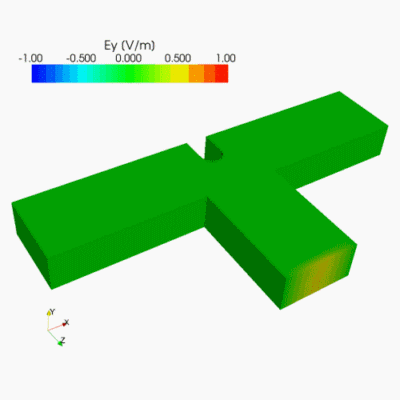German Research Foundation (DFG) Approves Collaborative Research Centre
German Research Foundation (DFG) Approves Collaborative Research Centre
The simulation of high-frequency electromagnetic fields in 3D requires efficient numerical methods. The discontinuous Galerkin method (DG-FEM) is a special class of the finite elements method and is particularly suitable for the simulation of electromagnetic wave propagations.
The difference between DG-FEM and conventional finite element methods lies in the special definition of the basis functions. In the context of DG-FEM, only local basis functions and test functions are used, i.e. Maxwell's equations are calculated locally in each finite element.
The coupling of the individual elements is done via specially adjusted fluxes of the electric and magnetic fields to the respective neighboring elements. In this process, the values at the element boundaries can be discontinuous, which makes it possible to approximate jumps in the solution well.
Advantages of this particular formulation are, on the one hand, the parallelized implementation and, on the other hand, the possibility of using explicit time integrators, which are sometimes much more efficient than implicit ones in case of appropriate geometric aspect ratios.
In this research field, efficient parallel solvers for the computation of high-frequency electromagnetic fields are developed. The numerical methods are based on the discontinuous Galerkin framework SLEDGE++, which was developed under the leadership of Prof. Tim Warburton and Prof. Jan Hesthaven and is now used and developed further by a large number of researchers, developers and users.
